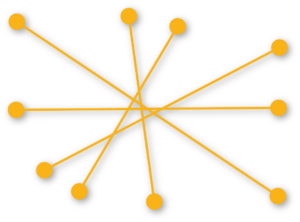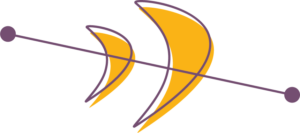NATURAL DISASTERS
The Weather and Contact Centers
A natural disaster is a natural event such as a flood, earthquake, or hurricane that causes great damage or loss of life. Contact centers are impacted in two ways by these natural disasters. First, the contact center can be shut down; employees are unable to get to the center, power outages prevent the equipment from operating, and in some cases centers are literally destroyed. The contact center’s disaster preparedness and business continuity strategy needs to be seamless with zero to minimal impact on customers. Today having a back up plan has never been easier especially with cloud based contact center software. No more worrying about that million-dollar switch getting damaged. No more stress that customers can’t get through and no more lost revenue. A hosted contact center platform can automatically reroute the calls to another location instantaneously.
Secondly, contact centers are used to support victims of natural disasters. Contact centers can be open 24/7 and handle emergency situations with an emergency hotline. Victims can call, email or SMS to connect with emergency services to find shelters, food, water, gas, batteries, and now, even where they can charge their cell phone. Once basic needs are provided, victims need to get insurance companies on the line for benefits, or in the case of Hurricane Sandy, what to do with mortgages on homes that have been swept away and destroyed. All these answers come from people who answer phones in contact centers. There are contact centers that specialize in this kind of short-term contract work.


Duplicate Your Operations
Duplicating your contact center in a second location is one disaster recovery best practice.
The most important characteristic of the alternate venue is the ability to transfer the telephone calls from the original contact center. The back up plan is to set up a second location – regionally diverse from the first one, preferably in a different climate zone. With today’s cloud based contact center technology it’s never been easier to stand up a contact center. In a matter of hours, you can have agents, computers and phones up and running while your PBX based competitors are drying out their premise based switch.
Prior to cloud technology the only option for the contact center was to be down and out.
Deploying a new premise based switch can take millions of dollars and months to implement. Today cloud contact centers require a phone, an internet connection and a web browser and you are ready to take calls.
Snowstorms are Different
While a snowstorm can be dangerous to drive in and prevent employees from getting to work they are not as debilitating as a natural disaster.
Usually in snowstorms people are stuck in their homes, safe and warm with nothing to do but watch old movies. With a hosted contact center platform, these agents can log into the contact center software from any internet browser and start taking calls.
No more wasted workday! They are At-Home agents for the day. Agents don’t have to use up PTO time because they don’t want to risk the drive in the snow.
Outages Are a Thing of the Past
Outages stop business in its tracks. Agents sit idle at their workstations watching the phone. The longer the outage the more difficult it is to keep agents busy doing other activities. It’s like a meter stacking up the payroll charges. Paying agents to do nothing is painful. It is amazing how many contact centers are okay with outages and chalk it up as part of doing business. Outages should be a thing of the past because with today’s technology the contact center software has built-in disaster recovery and Continuity of Operations Plan (COOP) to prevent costly outages.
Too many contact centers are still using old PBXs and many are using PBXs that are now obsolete. Margins may be skinny in the contact center business but taking the risk of an outage is even more costly than setting up your center correctly. Riding your PBX until it dies is small thinking. There is cheap and then there is economically smart.
It is difficult to transfer the calls from a physical switch when it is down. You need to contact the carrier and this can take days to make happen. There is also an extra charge for every leg the carrier transfer requires, perhaps another penny a minute. This can get pricey. With a cloud based contact platform there are no extra charges when call traffic is automatically moved.
A hosted based contact center platform will auto-detect a break and will automatically reroute call traffic to other locations. The contact center software eliminates outages by having server redundancy. By setting up servers regionally around the country when there are problems with traffic, the software will flip call traffic to another location. This takes less then 5 minutes. You can see it happen instantaneously on the manager’s dashboard. The only calls lost are the ones in process.
You maintain productivity and customer satisfaction eliminating any down time. So why are so many contact centers still hanging on to old PBX’s?
No matter why the outage: cut or downed cables, fire, flood, snow storm or pandemic you can connect from anywhere because you have the capability to be up and running in an alternate location as fast as you can log in. Is that fast enough for you?
INDUSTRY SERVICE TIPS
1. Contract with your local convention center as a local back up location. They have the infrastructure large enough to handle a high volume of calls already in place. Bring your laptops, login to the contact center platform with the internet browser and you are ready to take calls.
2. Select and contract with a BPO as an emergency backup

NEXT STEPS
Natural disasters and severe weather impact contact centers ability to do what they are in business to do, take calls.
When the contact center is down, business stops, revenue stops and customers who are not impacted by the disaster are frustrated with the stoppage. How do you keep your contact center going no matter what causes the outage? The best disaster recovery plan is a second location where call traffic can be transferred to immediately.
A hosted contact center platform will reroute call traffic instantaneously with no interruption to business. The platform will auto detect a break and you don’t have to do a thing but worry about escaping the flood, hurricane or whatever disaster is pending. With cloud based technology, outages are a thing of the past.
Finally, make sure you know what the disaster recovery plan is. Don’t wait for a crisis and then start looking for the plan. Find the plan or create one if it doesn’t exist. Line up back-up BPOs, or a local location that can be used ahead of time.
Negotiating contracts during a tornado won’t be your priority. Plan and be prepared and know that there is a contact center out there that will support you with crisis information, shelter and food information and handle your insurance claims.
The Problem with DR Plans
The problem with disaster recover plans is when the tornado alarm is blasting no one knows what to do, no one knows who has the plan, no one knows where to look for the plan.
Too many companies assume that someone else has the plan prepared and locked in a safe place. As a manager of the site, take the initiative to find it and if it doesn’t exist, create one!
A few things to consider:
If you must reroute call traffic, where do you want it to go?
If the contact center is physically threatened, what do you want employees to do in the case of fire, flood, tornado, hurricane, or earthquake?
Consider a back-up solution to the back-up solution. You need both a plan B and a plan C. How long will your back-up plan last?
Have your emergency BPO ready to transfer calls to so you can keep your business running.
If phone and internet is down, how will you communicate with employees?
Do you have a back-up location in case the building is damaged?
This only applies if you are running a cloud-based platform – you can’t physically move the premise based switch in the middle of a disaster.
VIDEO FROM OUR EXPERTS



INDUSTRY EXPERTS

Company 1

Company 2

Company 3
NETWORKING FOR CONTACT CENTER PROFESSIONALS
ABOUT NACSMA
NACSMA brings together like-minded professionals focused on advancing the customer contact industry and creating career growth.
BEST-IN-CLASS
Management of a best-in-class contact center sites require the continuous review of Agent Sourcing Models, Organizational Training and Management Development Programs.
NACSMA MEMBERSHIP
NACSMA is a professional, non-profit association whose members represent customer contact organizations and the vendors who support them.
IMPLEMENTATION
When a contact center organization expands to an additional site or requires new space, the steps to properly implement are unique to each organization but do have standard phases.
